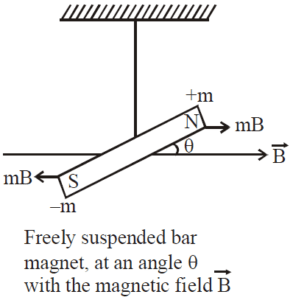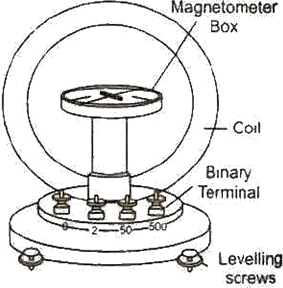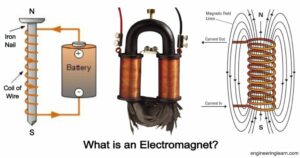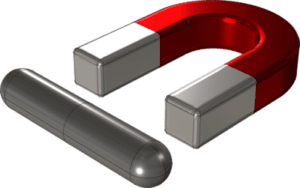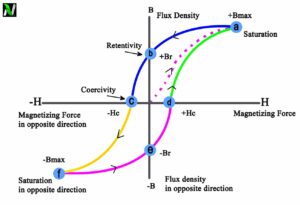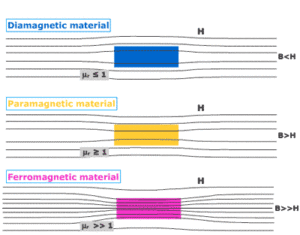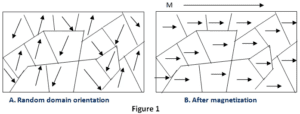In this short piece of article, we will discuss magnetizing field intensity and intensity of magnetization. This is the topic of chapter magnetism and matter class 12. So let’s get started… [latexpage]
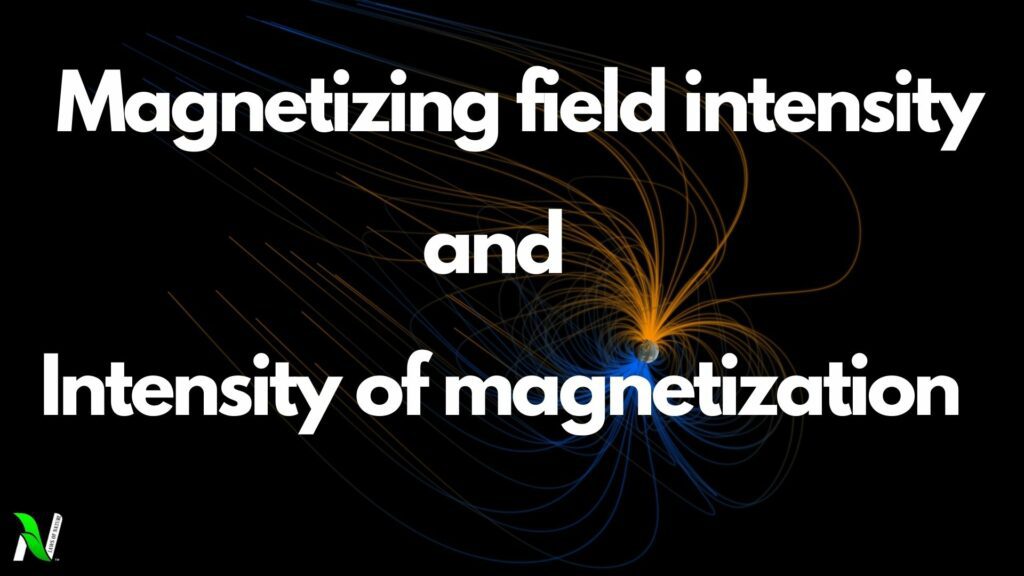
Magnetising field intensity
Definition: It is the ability of the magnetising field to magnetize a magnetic material when it is placed in any external magnetising field ${\vec{B_0}}$. It is expressed by a vector $\vec{H}$ called magnetising field intensity or magnetic intensity.
Its magnitude may defined as the ampere-turns $(nI)$ flowing through the unit length of the solenoid required to produce the following magnetising field. Thus $$H=nI$$
$$\therefore \qquad B_0=\mu_0 nI=\mu_0 H$$
| $$Or\quad H=\frac{B_0}{\mu_0}$$ |
The dimensions of magnetising field intensity is $[AL^{-1}]$. Its SI unit is ampere per meter $(Am^{-1})$. It is equivalent to $Nm^{-2}T^{-1}$ or $Jm^{-1}{Wb}^{-1}$.
Intensity of magnetisation
As we know that when a magnetic material is placed in an external magnetizing field, it becomes magnetized.
Definition: The magnetic moment developed per unit volume of a material when it is placed in external magnetising field called intensity of magnetisation or simply magnetisation.
Thus, mathematically, the intensity of magnetization is given as $$\overrightarrow{M}=\frac{\vec{m}}{V}$$
If $I_{M}$ is the surface magnetization current which has been set up in a solenoid of cross-sectional area $A$ and has $n$ turns per unit length, then the magnetic moment is developed at per unit length of the solenoid is $nI_{M}A$. Therefore, the magnetic moment developed per unit volume of a solenoid of magnetization $\vec{M}$ is given as $$M=\frac{m}{V}=\frac{nI_{M}A}{A}=nI_{M}$$
Hence,
$$B_{M}=\mu_0 nI_{M}=\mu_0 M$$ Now, consider a bar of magnetic material having cross-sectional area $a$ and length $2l$. Its volume is given by $$V=a\times 2l$$ Let’s suppose that the bar developed a pole strength $q_{m}$ at its end, when placed in external magnetising field, then the magnetic moment so developed is given as: $$m=q_m \times 2l$$ $$\therefore\quad M=\frac{m}{V}=\frac{q_m \times 2l}{a\times 2l}=\frac{q_m}{a}$$
| Hence, the intensity of magnetization can also be defined as the pole strength developed per unit cross-sectional of the area of a magnetic material. |
The total magnetic field or magnetic induction $\vec{B}$ inside a magnetic material is the sum of magnetizing field $\vec{B_0}$ and the field $\vec{B_M}$ arise due to the magnetisation of the material. Therefore, $$B=B_0+B_M = \mu_0 H+\mu_0 M$$
| $$B=\mu_0(H+M)$$ |
SI unit of both $H$ and $M$ is the same $Am^{-1}$.
Suggested reading:
- Earth’s magnetism class 12 | causes, definitions, elements, and variations
- what is bar magnet? definition, uses, properties, and types
Stay tuned with Laws Of Nature for more useful and interesting content.

